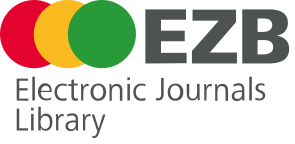Family-centered models and benefits of a multidisciplinary approach in children with Autism Spectrum Disorder
DOI:
https://doi.org/10.56294/neuro2024130Keywords:
Autism Spectrum Disorder, motor skills, early intervention, inclusion, familyAbstract
The study addressed Autism Spectrum Disorder (ASD) as a neurodevelopmental condition characterized by persistent deficits in social communication, repetitive behavior patterns, and clinical variability in symptom expression. It was reported that the global prevalence ranged from 0.7% to 1% in the child population, with rising figures in countries such as the United States and 1.96% in Chile, positioning ASD as a public health problem with educational and health implications. Likewise, the coexistence of frequent comorbidities was analyzed, highlighting motor alterations such as hypotonia, motor clumsiness, coordination difficulties, and delayed developmental milestones, which were recognized as early markers of the disorder. It was explained that these alterations affected language and cognitive development, generating a cascade effect that limited social interaction and functional autonomy. Various studies reviewed showed that intervention programs based on structured physical activity, physical therapy, and motor stimulation offered significant improvements in coordination, balance, postural control, and social inclusion. In addition, innovative approaches such as creative yoga, video games with motion sensors, and virtual reality were highlighted, which expanded therapeutic possibilities. Finally, the importance of a multidisciplinary approach with a family-centered focus was highlighted, in which parents and caregivers actively participated in the continuity of treatment. This model strengthened adherence, promoted family empowerment, and optimized the quality of life of children with ASD.
References
1. Bermello DOB, Castillo YEC, Morales ASE, Zambrano DAL, Yupangui VAE. Intervención multidisciplinaria en pacientes con trastorno del espectro autista con base en las prácticas centradas a la familia. RECIAMUC. 2024;8(1):288-96. https://doi.org/10.26820/reciamuc/8.(1).ene.2024.288-296
2. Busti Ceccarelli S, Ferrante C, Gazzola E, Marzocchi GM, Nobile M, Molteni M, et al. Fundamental motor skills intervention for children with autism spectrum disorder: a 10-year narrative review. Children (Basel). 2020;7(11):250. https://doi.org/10.3390/children7110250
3. Campo Ternera LA. Importancia del desarrollo motor en relación con los procesos evolutivos del lenguaje y la cognición en niños de 3 a 7 años de la ciudad de Barranquilla (Colombia). Rev Salud Uninorte. 2010;26(1):65-76.
4. Centers for Disease Control and Prevention. Prevalence of autism spectrum disorders among children age 8 years—Autism and Developmental Disabilities Monitoring. Atlanta: CDC; 2014.
5. Chu CH, Tsai CL, Chen FC, Sit CHP, Chen PL, Pan CY. The role of physical activity and body-related perceptions in motor skill competence of adolescents with autism spectrum disorder. Disabil Rehabil. 2020;42(10):1373-81. https://doi.org/10.1080/09638288.2018.1526334
6. Crippa A. Fundamental motor skills intervention for children with autism spectrum disorder: a 10-year narrative review. Children. 2020;7(11):250. https://doi.org/10.3390/children7110250
7. Díaz JML, Rodríguez RM, Bastias JLL. Análisis del impacto de un programa deportivo en niños con Trastorno del Espectro del Autismo. Retos. 2021;(39):98-105. https://doi.org/10.47197/retos.v0i39.74841
8. Elsabbagh M, Divan G, Koh YJ, Kim YS, Kauchali S, Marcín C, et al. Global prevalence of autism and other pervasive developmental disorders. Autism Res. 2012;5(3):160-79. https://doi.org/10.1002/aur.239
9. Guivarch J, Jouve E, Avenel E, Poinso F, Conforti-Roussel L. Effect of physical therapy on 7- to 10-year-old children with autism spectrum disorder: a retrospective study in a university day hospital. Bull Menninger Clin. 2021;85(4):385-404. https://doi.org/10.1521/bumc.2021.85.4.385
10. Harris SR. Early motor delays as diagnostic clues in autism spectrum disorder. Eur J Pediatr. 2017;176(9):1259-62. https://doi.org/10.1007/s00431-017-2951-7
11. Hawks Z, Constantino JN, Weichselbaum C, Marrus N. Accelerating motor skill acquisition for bicycle riding in children with ASD: a pilot study. J Autism Dev Disord. 2020;50:342-8. https://doi.org/10.1007/s10803-019-04224-5
12. Hocking DR, Ardalan A, Abu-Rayya HM, Farhat H, Andoni A, Lenroot R, et al. Feasibility of a virtual reality-based exercise intervention and low-cost motion tracking method for estimation of motor proficiency in youth with autism spectrum disorder. J Neuroeng Rehabil. 2022;19(1):1. https://doi.org/10.1186/s12984-021-00978-1
13. Hill AP, Zuckerman K, Fombonne E. Epidemiology of autism spectrum disorders. In: Volkmar FR, Rogers SJ, Paul R, Pelphrey KA, editors. Handbook of autism and pervasive developmental disorders. Diagnosis, development, and brain mechanisms. 4th ed. Vol. 1. Hoboken: Wiley; 2014. p. 57-96. https://doi.org/10.1016/B978-0-444-52002-9.00023-1
14. Kaur M, Bhat A. Creative yoga intervention improves motor and imitation skills of children with autism spectrum disorder. Phys Ther. 2019;99(11):1520-34. https://doi.org/10.1093/ptj/pzz115
15. King V, Stevens A, Nußbaumer-Streit B, Kamel C, Garritty C. Paper 2: Performing rapid reviews. Syst Rev. 2022;11(1). https://doi.org/10.1186/s13643-022-02011-5
16. Kozlowski KF, Lopata C, Donnelly JP, Thomeer ML, Rodgers JD, Seymour C. Feasibility and associated physical performance outcomes of a high-intensity exercise program for children with autism. Res Q Exerc Sport. 2021;92(3):289-300. https://doi.org/10.1080/02701367.2020.1726272
17. Landa R, Garrett-Mayer E. Development in infants with autism spectrum disorders: a prospective study. J Child Psychol Psychiatry. 2006;47(6):629-38. https://doi.org/10.1111/j.1469-7610.2006.01531.x
18. Leonard HC, Hill EL. Review: The impact of motor development on typical and atypical social cognition and language: a systematic review. Child Adolesc Ment Health. 2014;19(3):163-70. https://doi.org/10.1111/camh.12055
19. Lloyd M, MacDonald M, Lord C. Motor skills of toddlers with autism spectrum disorders. Autism. 2013;17(2):133-46. https://doi.org/10.1177/1362361311402230
20. Lopez-Espejo MA, Nuñez AC, Moscoso OC, Escobar RG. Clinical characteristics of children affected by autism spectrum disorder with and without generalized hypotonia. Eur J Pediatr. 2021;180(10):3243-6. https://doi.org/10.1007/s00431-021-04038-7
21. Maenner MJ, Shaw KA, Baio J, Washington A, Patrick M, DiRienzo M, et al. Prevalence of autism spectrum disorder among children aged 8 years—Autism and Developmental Disabilities Monitoring Network, 11 sites, United States, 2016. MMWR Surveill Summ. 2020;69(4):1-12. https://doi.org/10.15585/mmwr.ss6904a1
22. Memari AH, Ghanouni P, Shayestehfar M, Ghaheri B. Postural control impairments in individuals with autism spectrum disorder: a critical review of current literature. Asian J Sports Med. 2014;5(3):e22963. https://doi.org/10.5812/asjsm.22963
23. Melnikov EY, Khodasevich LS, Polyakova AV, Legkaya EF. Dvigatel'nye narusheniya u detei s rasstroistvami autisticheskogo spektra: prichiny vozniknoveniya i vozmozhnosti korrektsii [Motor impairments in children with autism spectrum disorders: causes and possibilities for correction]. Vopr Kurortol Fizioter Lech Fiz Kult. 2023;100(4):54-61. https://doi.org/10.17116/kurort202310004154
24. Perin C, Valagussa G, Mazzucchelli M, Gariboldi V, Cerri CG, Meroni R, et al. Physiological profile assessment of posture in children and adolescents with autism spectrum disorder and typically developing peers. Brain Sci. 2020;10(10):681. https://doi.org/10.3390/brainsci10100681
25. Rocha CL, Castelli LF, Flores DF, Bustos FT, Nahuelpán SQ, Álvarez MA, et al. Desarrollo motor en niños-escolares de 5-12 años con trastornos del espectro autista (TEA): una revisión sistemática. Rev Peru Cienc Act Fís Deporte. 2021;8(3):10. https://doi.org/10.53820/rpcafd.v8i3.151
26. Vukićević S, Đorđević M, Glumbić N, Bogdanović Z, Đurić Jovičić M. A demonstration project for the utility of Kinect-based educational games to benefit motor skills of children with ASD. Percept Mot Skills. 2019;126(6):1117-44. https://doi.org/10.1177/0031512519867521
27. Wilson RB. Improving awareness, identification, and treatment of motor impairments in autism. Pediatrics. 2022;149(Suppl 4):e2020049437K. https://doi.org/10.1542/peds.2020-049437K.
Published
Issue
Section
License
Copyright (c) 2024 Camila Paz Jorquera Gallardo, Simón Ignacio Pereira Bruna, Pedro Di Vicenzi Sánchez (Author)

This work is licensed under a Creative Commons Attribution 4.0 International License.
The article is distributed under the Creative Commons Attribution 4.0 License. Unless otherwise stated, associated published material is distributed under the same licence.






